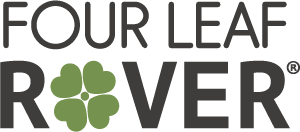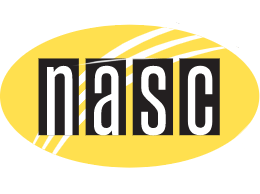Can Dogs Get Lice?

We all know about lice: those tiny, wingless insects that infest and feed on the blood of mammals.
But while most people associate these pests with schoolchildren, many pet owners wonder: can dogs get lice too?
The answer is yes, dogs can get lice … but it's not the same strain that commonly affects humans.
So it’s good to know how to spot them and get rid of them. Let's delve into the full details of lice infestation in dogs.
Can Dogs Get Lice?
Let’s tackle the biggest question right away. Yes, dogs can get lice.
Again, the lice that infest dogs are different from the type that humans get. These tiny pests can cause your dog a lot of discomfort, leading to symptoms like excessive scratching, hair loss, and skin inflammation.
While lice aren’t as common in dogs as fleas or ticks, infestations can still occur, especially if dogs are in close contact with infected animals or contaminated items. Early detection and treatment helps ensure your pup's health and comfort.
How Do Dogs Get Lice?
Like many parasites, dogs most often get lice through direct contact with another infected animal.
Unlike fleas that can jump from one host to another, lice are slow movers. Dogs that socialize with other dogs, particularly in places like parks, grooming salons, or kennels, are at a higher risk of getting lice.
Sharing grooming tools or bedding with an infested dog can also spread the lice.
Can Dogs Get Lice From Humans?
At this point you’re probably wondering: can dogs get lice from humans? Or can your dog give you lice?
The good news is that dog lice and human lice are species-specific. This means that the lice infesting dogs are not the same ones that infest humans, and vice versa. Therefore, dogs cannot get lice from humans and, conversely, humans cannot get dog lice.
But if your dog gets lice and you have other pets, you’ll want to isolate him so it doesn’t spread to your other animals.
What Do Lice Look Like On Dogs?
So how can you spot these pests on your pup?
Unfortunately, dog lice have a flat body and a pale color, making them difficult to spot against your dog's skin. They’re also tiny … we’re talking 1 to 2 mm long.
If you want to check your dog for lice, look in areas where the fur is thinner or where your dog has been scratching frequently. Here are some of the places lice like to hang out on dogs …
- Around the ears
- Neck and collar
- Groin and underbelly
- Base of the tail
- Armpits and legs
- Back and sides
Also, while you might be able to see lice or their eggs (known as nits) with the naked eye, using a fine-toothed comb (like a flea comb) can help collect them, making them easier to identify.
A magnifying glass may also help you get a clearer look if you're struggling to spot them. If you're uncertain, a trip to your holistic vet can provide clarity. They have the tools and expertise to identify lice infestations and advise on the best course of treatment.
Your vet can also help you determine what kind of dog lice you’re dealing with: biting lice (which feed on your dog's skin) or sucking lice (which suck blood). Typically, a microscope is required to distinguish the two by their mouthparts.
Lice On Dogs Symptoms
Spotting lice on dogs might be challenging, but the symptoms they cause may give them away! When your dog is infested, the nagging discomfort and itching he feels can significantly change his behavior and alert you to the infestation.
Here are some common symptoms to watch for that might indicate your dog has been invaded by these pesky parasites:
- Scratching, biting, or rubbing infested areas: Your dog will naturally try to rid himself of the itching sensation by scratching or biting at the infested sites.
- Restlessness: The constant discomfort can make your pup fidgety, irritable, and less inclined to sit still or rest.
- Loss of hair, especially in patches: Frequent scratching can lead to hair breakage or even cause your dog to pull out his hair, leading to bald patches.
- Red or irritated skin: The skin in the infested areas might become red and inflamed due to both the parasites' activities and your dog's incessant scratching.
- Dandruff-like debris in the fur: Often mistaken for dandruff, these are actually lice eggs or "nits."
Unlike typical dandruff, lice nits or eggs are sticky and adhere firmly to the hair, making them more challenging to remove. They appear as tiny, oval, and slightly off-white in color. As they're about the size of a pinhead, distinguishing them from real dandruff can be challenging.
However, their fixed position on the hair shaft is a telltale sign. Over time, as the nits mature, they may darken, becoming easier to spot. So if your dog has never had dandruff before… but you suddenly notice dandruff-like debris along with all the other symptoms above, this can be a giveaway that you’re dealing with lice on dogs.
How To Get Rid Of Lice On Dogs
If you're looking to rid your dog of lice without resorting to chemicals, there are natural remedies to consider.
Here’s the three step process to get rid of lice on dogs naturally:
- Frequent Grooming: First, using a fine-toothed comb, groom your dog daily to remove adult lice and nits.
- Diatomaceous Earth (DE): This is a natural powder that can dehydrate and kill lice. Sprinkle it on your dog's coat, being careful to avoid the eyes and nose (you don’t want your dog to inhale the fine powder). Leave it for several hours, then wash off. NOTE: Make sure you are using food-grade DE!
- Apple Cider Vinegar: A diluted solution can be sprayed onto your dog's fur. Its acidity is believed to deter lice.
- Neem Oil: It has insecticidal properties and can help get rid of lice. Dilute 1 part neem oil to 10 parts of a carrier oil like almond or olive oi. Apply it to your dog’s coat, leave on for a few hours, then wash it off using a natural, organic shampoo.
Another good, simple preventative mixture is lemon juice and water. Similar to ACV, this mix can act as a natural repellent. Spray it onto your dog's coat, let it sit for a few hours, then rinse.
In addition to these methods, ensure you wash your dog's bedding, toys, and grooming tools regularly. Lice can hide in these areas and then “re-infest” your pup. So it’s best to do a thorough cleaning of anything your dog regularly comes into contact with.
The good news is that once you’ve rooted out any infestation, the same process above can also be used to prevent lice in the future. Frequent grooming, DE, and apple cider vinegar don’t just help get rid of dog parasites … they can also help prevent them.




